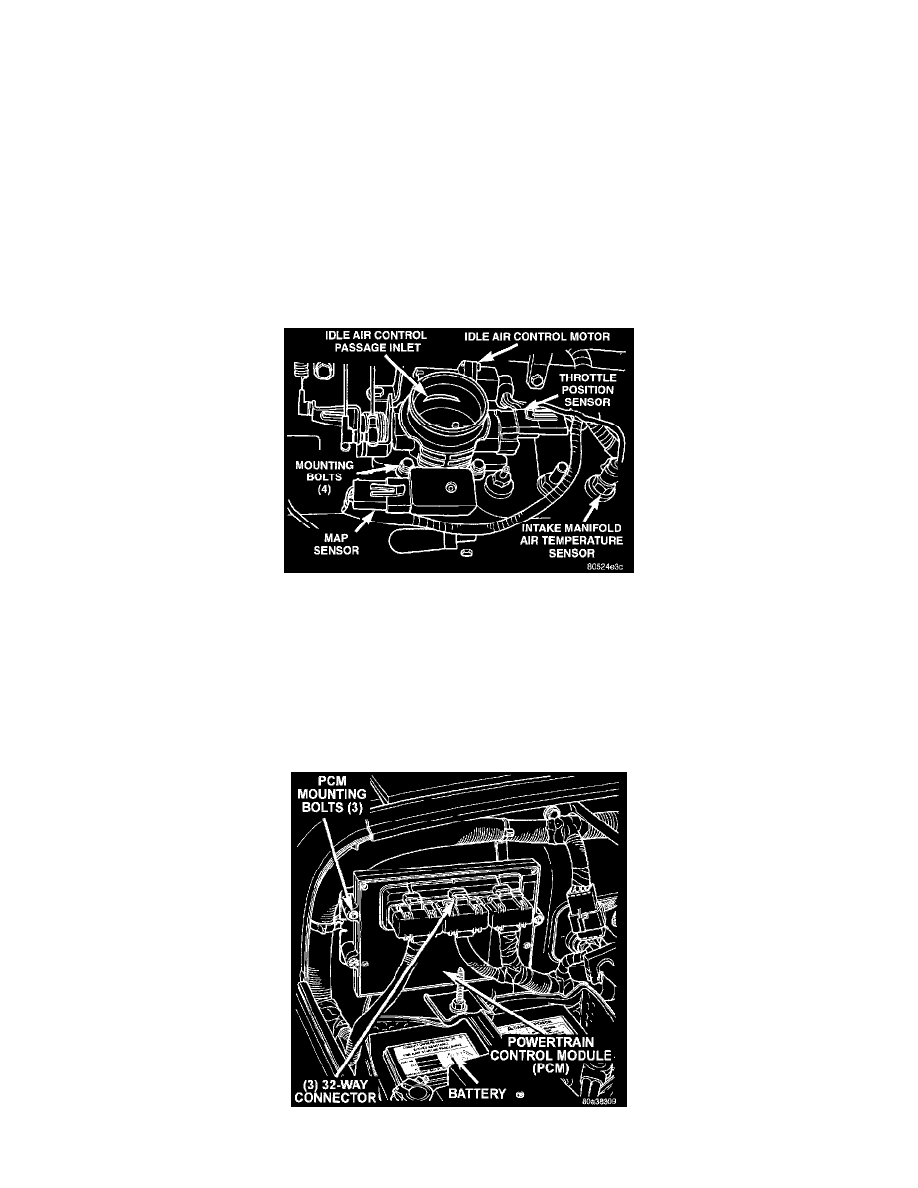Wrangler 4WD L4-150 2.5L VIN P MFI (1998)

the PCM has recorded a system or sensor malfunction. In some cases, when a problem is declared, the PCM will go into a limp-in mode. This is an
attempt to keep the system operating. It signals an immediate need for service.
The lamp can also be used to display a Diagnostic Trouble Code (DTC). Refer to Computers and Control Systems/Testing and
Inspection/Procedures.
The lamp is also used to display certain engine misfires. Refer to Computers and Control Systems/Testing and Inspection/Procedures.
Manifold Absolute Pressure (MAP) Sensor-PCM Input
MANIFOLD ABSOLUTE PRESSURE (MAP) SENSOR-PCM INPUT
The MAP sensor reacts to absolute pressure in the intake manifold. It provides an input voltage to the Powertrain Control Module (PCM). As
engine load changes, manifold pressure varies. The change in manifold pressure causes MAP sensor voltage to change. The change in MAP sensor
voltage results in a different input voltage to the PCM. The input voltage level supplies the PCM with information about ambient barometric
pressure during engine start-up (cranking) and engine load while the engine is running. The PCM uses this input along with inputs from other
sensors to adjust air-fuel mixture.
Fig. 7 Intake Air Temp. Sensor Location-Typical
The MAP sensor is mounted on the side of the engine throttle body (Fig. 7). The sensor is connected to the throttle body with a rubber L-shaped
fitting.
Oil Pressure Sensor-PCM Input
Sends a signal from the oil pressure sending unit to the Powertrain Control Module (PCM) relating to engine oil pressure.
Operation
Powertrain Control Module (PCM) Location
